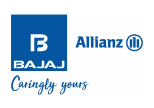FASTag: A Complete Guide to Benefits and Usage in India
FASTag in India: Benefits, Usage, and How It Works
India is undergoing a major technological revolution. The digital wave has transformed several industries in its wake, the most significant being the transportation sector. The National Payments Corporation Of India (NPCI) developed the National Electronic Toll Collection (NETC) program to facilitate an interoperable ecosystem of the toll collection process throughout the country. Since it’s inception, the FASTag has not only enabled easy toll payment but also facilitated seamless toll collection. This article explores all aspects of FASTag — from it’s ideation and implementation to how it has changed how toll booths work in the country. Read on to find out more.
What is FASTag?
The NETC FASTag is an RFID enabled sticker stuck on a vehicle’s windshield to facilitate seamless and automatic electronic payments at national, state and city toll plazas without having to stop for toll payments. One of the aims behind introducing this system is to encourage motorists to use the various digital payment modes made available by the government for their convenience. With FASTag, one never has to worry about carrying change or stopping enroute their destination at toll plazas. The tags are issued by member banks authorized by the NETC program under the NPCI initiative of the RBI.
FASTags enable vehicle owners to save on their fuel and efforts, thus making toll payments hassle free.
History and Evolution of FASTag in India
Toll collection is a major component contributing to the development and maintenance of major highways across India. Manual collection of toll money had several disadvantages, some of which had no concrete solutions. The government of India started several novel initiatives to promote the use of technology aimed at improving the everyday life of Indian citizens. NETC was one of them.
-
The concept of FASTag was first introduced in India in 2014 as part of a pilot project on select highways, including the Ahmedabad-Mumbai route.
-
By 2016, the adoption of FASTag had expanded significantly, with around 70% of toll plazas accepting it.
-
The government made FASTag mandatory for all vehicles sold after December 2017, and as of February 15, 2021, it became compulsory for all vehicles on national highways. Failure to comply results in double toll charges.
How FASTag Works
The NETC defines the transaction flow using the FASTag in eight different legs. The biggest advantage of this system is that transactions are transparent. No foul play (driving a car with an invalid registration or number plates) is entertained, thus ensuring a foolproof payments system.
Leg 1: When a vehicle passes through the ETC (Electronic Toll Collection) lane of the toll booth, the toll collection system captures details such as Tag ID, TID, Vehicle class, etc. and sends it to the acquiring bank for processing the transaction.
Leg 2: The acquiring bank sends a request to the NETC mapper to validate the tag details.
Leg 3: Once the Tag ID is validated, NETC Mapper responds with details like Vehicle class, VRN, Tag Status etc. If the Tag ID is absent in NETC Mapper, it will respond that the Tag ID is not registered.
Leg 4: After successful validation of Tag ID from NETC Mapper, acquirer host calculates the appropriate toll fare and initiate a debit request to NETC system.
Leg 5: NETC System will switch the debit request to the respective issuer bank for debiting the account of the customer.
Leg 6: Issuer host shall debit the linked tag holder account and sends a SMS alert to the tag holder. The Issuer host shall send the response message to NETC system. If the response is not sent within the defined TAT, the transaction are considered as Deemed Accepted.
Leg 7: NETC system will notify the response to acquirer host.
Leg 8: Acquirer host will notify to respective toll plaza system.
The FASTag Process
Tag Affixation: The FASTag is affixed to the inside of the vehicle's windscreen.
Account Linking: Users must link their FASTag to a prepaid account or savings account.
Toll Payment: As the vehicle approaches a toll plaza, the RFID reader scans the tag and deducts the toll amount automatically.
Transaction Notification: Users receive notifications regarding successful transactions and account balances through their linked mobile apps.
How to Obtain and Activate FASTag
Eligibility Criteria
To obtain a FASTag, applicants must own a vehicle registered in India. The tag can be issued for various types of vehicles, including cars, trucks, and buses. You may also visit https://www.netc.org.in/ to get the FASTag guide which contains information on the eligibility criteria for various applicants.
Application Process
-
Choose a Provider: Select an authorized bank or digital platform offering FASTags.
-
Fill Out Application: Complete the application form with accurate details about your vehicle.
-
Submit Documents: Provide necessary documents such as the vehicle registration certificate (RC) and identity proof.
-
Payment: Pay any applicable fees, which may include an issuance fee and an initial recharge amount.
Activation and Installation
Once you receive your FASTag:
-
Affix it Properly: Install it on your vehicle's windscreen as per guidelines.
-
Activate via App: Use your bank provider's banking app or website to activate your tag.
-
Recharge Account: You may recharge the balance through your bank’s internet banking system or UPI or any digital payment mode linked to your issuing bank’s savings account. Ensure that your linked account has sufficient balance for future transactions.
Benefits of Using FASTag
Time and Fuel Efficiency
One of the primary advantages of using FASTag is the significant reduction in time spent at toll plazas. Vehicles can pass through without stopping, which not only saves time but also reduces fuel consumption by minimizing idling at toll booths.
Cashless Transactions
FASTag promotes cashless transactions, eliminating the need for physical currency at toll plazas. This feature enhances convenience for drivers, allowing them to focus on their journey rather than handling cash payments.
Environmental Impact
By reducing congestion at toll plazas, FASTag contributes to lower emissions from vehicles idling in queues. This environmental benefit aligns with government initiatives aimed at reducing air pollution and promoting sustainable transportation solutions.
Enhanced Transparency and Account Management
FASTag provides users with real-time updates on their transactions and account balances through mobile apps. This transparency fosters better financial management for users as they can track their spending on tolls easily.
Usage of FASTag
At Toll Plazas
FASTags are primarily used at national highway toll plazas across India. As vehicles approach these plazas, they can drive through designated FASTag lanes where automatic deductions occur without any need for stopping or manual payment processing.
Other Applications
Beyond toll payments, there are plans to expand the use of FASTags to include functionalities like parking payments at airports and other facilities, making it a versatile payment solution for various vehicular expenses.
Common Issues and Troubleshooting
-
Low Balance Notifications
-
Users receive alerts when their FASTag balance is low, prompting them to recharge their accounts before running out of funds during travel.
-
Transaction Disputes
-
In case of discrepancies in transactions or incorrect deductions, users can raise disputes through their bank's customer service or via the app used for managing their FASTag accounts.
-
Tag Malfunction
-
If a FASTag does not work correctly (e.g., not being detected at toll plazas), users should check its installation or contact customer support for assistance.
Future of FASTag in India
Upcoming Features and Integrations
The government plans to enhance FASTag with additional features such as integration with other payment systems for fuel purchases and e-challans, aiming to create a comprehensive digital payment ecosystem for vehicles.
Government Initiatives
Various government initiatives are underway to promote digital payments through systems like FASTag as part of broader efforts to modernize transportation infrastructure in India and encourage cashless transactions across sectors.
Conclusion
The successful implementation of FASTag has empowered the Indian population to use digital modes of payment during their trips without the hassle of having to carry loose change or even stop while making payments at toll booths. It brought about transparency in the transactions between the NETC framework and member banks’ framework.














































